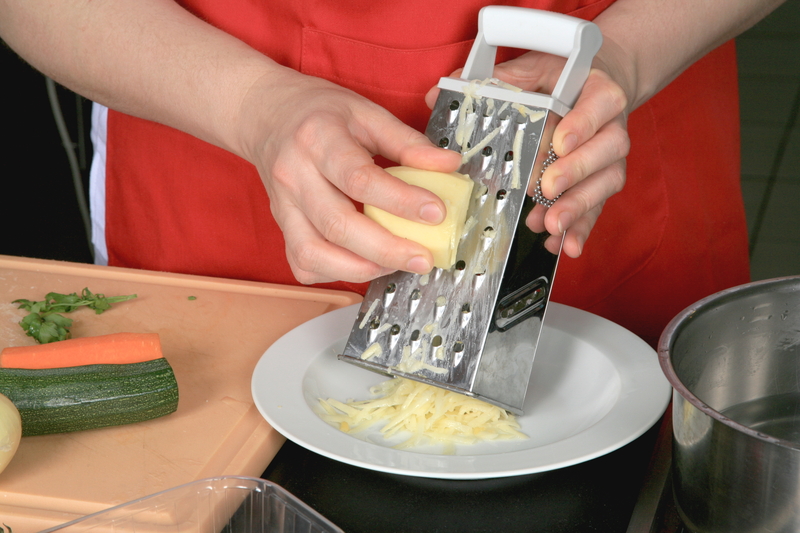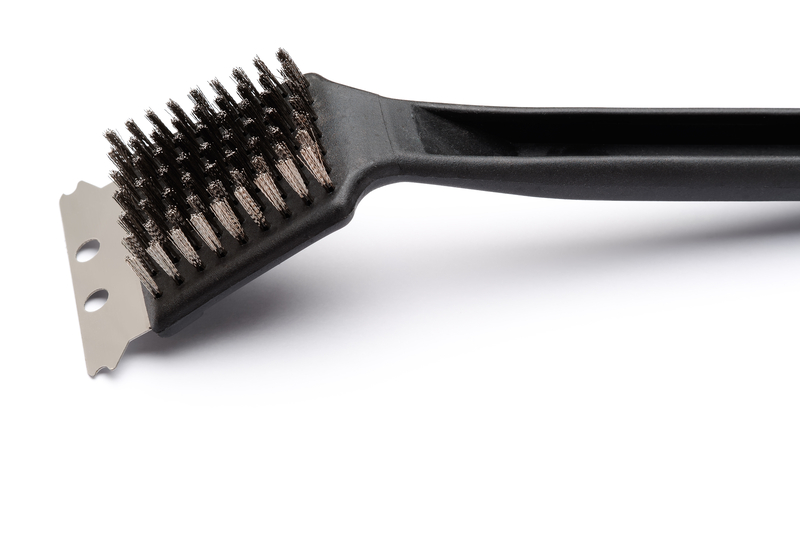Expert Advice on How to Ensure Your Bathroom Stays Mold-Free
Posted on 03/06/2025
Expert Advice on How to Ensure Your Bathroom Stays Mold-Free
Mold growth in bathrooms can not only be unsightly but also pose serious health risks and structural problems in your home. As one of the most moisture-prone areas in any house, bathrooms are common breeding grounds for mold and mildew. By following expert advice on keeping your bathroom mold-free, you can maintain a clean, healthy environment and add longevity to your home fixtures. This comprehensive guide details effective strategies, proactive steps, and actionable tips--so you can say goodbye to bathroom mold for good.

Why Is Mold So Common in Bathrooms?
Bacterial and fungal spores exist everywhere, but mold needs certain conditions to grow:
- Moisture
- Warmth
- Lack of ventilation
- Organic matter to feed on (such as dust, paper, wood, or soap scum)
Bathrooms usually check all these boxes after a hot shower. Even well-maintained bathrooms can harbor mold if even one of these factors is neglected.
The Dangers of Mold Growth in Bathrooms
Mold prevention in bathrooms isn't just about aesthetics. Black mold stains and musty smells are only the beginning. Here's what could happen if you let mold persist:
- Health risks: Mold spores can cause or worsen respiratory problems, trigger allergies, and affect those with weakened immune systems.
- Structural damage: Persistent moisture and undetected mold can cause rot in walls, ceilings, and floors.
- Decreased property value: Prospective buyers are likely to walk away from homes with visible mold or persistent moldy odors.
Early intervention and ongoing prevention are critical to keeping your bathroom mold-free.
Key Steps and Tips for a Mold-Free Bathroom
1. Ensure Proper Ventilation
The number one cause of bathroom mold is poor air circulation. Follow these steps for optimal ventilation:
- Install a high-quality bathroom fan. Choose a model that's appropriately sized for your bathroom's square footage. Look for fans with moisture sensors for extra convenience.
- Use the fan: Always run the fan during and for at least 20-30 minutes after showers or baths.
- Open windows when weather permits for cross ventilation.
- Consider keeping the bathroom door slightly open during and after showers to promote airflow.
2. Control Moisture and Humidity
Mold thrives on moisture. Effective moisture control is the heart of any mold prevention strategy for your bathroom:
- Fix leaks immediately. Leaky sinks, toilets, tubs, and pipes create ideal hiding spots for mold. Regularly inspect under sinks and around fixtures.
- Wipe down wet surfaces after use: This includes shower walls, tub edges, sinks, and counters.
- Hang up towels and bathmats to dry--never leave them bunched up on the floor.
- Use a dehumidifier in bathrooms without adequate ventilation or if humidity levels remain high (ideally, indoor humidity should be between 30%-50%).
3. Utilize Mold-Resistant Materials
Building or remodeling? Choose materials that inherently resist mold:
- Mold-resistant drywall (greenboard) and backer board.
- Epoxy grout instead of regular cement grout for tile work.
- Choose waterproof paints and sealants designed for bathrooms.
- Opt for solid surfaces like quartz or granite instead of porous materials.
Upgrading materials can significantly reduce the likelihood of future mold problems.
4. Adopt a Regular Cleaning Routine
A proactive cleaning schedule is one of the most powerful ways to ensure your bathroom stays mildew and mold-free:
- Clean all surfaces weekly: Including tile grout, shower doors, curtains, and hard-to-reach corners.
- Target mold-prone areas: Pay attention to caulking and the bottom of shower curtains where mold is most likely to start.
- Use anti-mold cleaners, such as vinegar, hydrogen peroxide, or specialized mold sprays--avoid harsh bleach unless truly necessary.
- Wash towels, bathmats, and shower curtains regularly in hot water.
5. Keep Clutter to a Minimum
Cluttered bathrooms allow for less airflow and create dark, damp spaces for mold to develop:
- Reduce the number of products kept in the shower--bottles and loofahs trap water and provide perfect breeding grounds for mold spores.
- Make use of wall-mounted shelves or caddies to allow items proper drainage and ventilation.
Less clutter means fewer hiding spots for mold and makes cleaning easier and more thorough.
Spotting the Early Signs of Bathroom Mold
Early detection is your best friend. Here's what to watch for during your routine inspections:
- Musty or unpleasant odors lingering after cleaning
- Dark spots or discoloration on walls, grout, tile, or ceilings
- Peeling paint or wallpaper (a sign that moisture is trapped behind it)
- Condensation on mirrors and glass--even long after you've finished showering
If any of these symptoms appear, address them immediately to prevent mold from spreading.
Effective Mold Removal Strategies
When to Call a Professional
For small scale mold issues (less than a 3-foot square area), you can often handle removal yourself. However, consult mold-removal experts if:
- Mold covers a large area or keeps coming back after cleaning
- You suspect mold behind walls, ceilings, or under flooring
- Household members have health concerns or severe sensitivities
DIY Mold Removal Solutions
For minor issues, follow these safe, effective steps:
- Wear gloves and a mask to prevent inhaling mold spores
- Ventilate the area during cleaning
- Scrub visible mold with a mixture of white vinegar and water, or hydrogen peroxide and water
- For stubborn stains, use a paste of baking soda and water
- Allow surfaces to dry completely
Avoid mixing bleach and ammonia, as this can create toxic fumes.
If you use commercial mold removers, always follow manufacturer instructions closely.
Replacing Damaged Materials
If mold has damaged or penetrated porous surfaces such as drywall, acoustical tiles, or insulation, these materials must be removed and replaced. Simply cleaning the surface will not suffice, as mold can linger deep inside.
Bathroom Design for Long-Term Mold Prevention
Those designing or renovating a bathroom have powerful tools to prevent mold growth for years to come. Here's how:
- Choose larger tiles with smaller grout lines--reducing the opportunity for mold to develop in tiny cracks
- Seal all grout lines and tile with quality waterproofing sealant annually
- Install sloped shower floors and high-quality drains to prevent standing water
- Opt for glass doors (which dry quickly) instead of shower curtains
- Incorporate natural light sources--sunlight is naturally mold-inhibiting
Frequently Asked Questions about Bathroom Mold Prevention
What are the best daily habits to prevent bathroom mold?
The best daily habits to ensure a mold-free bathroom include:
- Wiping down wet walls and surfaces after showers or baths
- Running the exhaust fan for at least 20 minutes post-showering
- Keeping the space as dry as possible between uses
Can plants prevent bathroom mold?
Some houseplants can absorb moisture and slightly enhance indoor air quality, but they are not substitutes for proper ventilation and moisture control. In fact, overwatered or neglected plants can add to humidity and harbor mold themselves.
How often should I deep-clean my bathroom to deter mold?
Thorough bathroom cleaning should be conducted weekly, with a focus on grout, corners, and all moisture-prone areas. Shower curtains and bathmats should be washed every 1-2 weeks.
Does paint choice make a difference?
Absolutely. Using mold- and mildew-resistant paint forms an extra layer of defense, especially in showers and high humidity environments.

Year-Round Bathroom Mold Prevention Checklist
Use this simple checklist to ensure your bathroom stays as safe, healthy, and mold-free as possible:
- Install and use effective ventilation (fan and/or window)
- Remove moisture after every bath/shower
- Fix any leaks instantly--don't ignore "minor drips"
- Regularly clean and inspect all surfaces, especially grout and corners
- Swap out towels, mats, and shower curtains frequently
- Use mold-resistant products during renovations
- Declutter the bathroom and use smart storage
- Keep humidity below 50% with dehumidifiers as needed
Your Health and Home are Worth the Effort
Keeping your bathroom mold-free doesn't have to be a struggle. By combining simple, consistent habits with strategic upgrades, you can dramatically reduce the risk of mold and enjoy a fresher, safer home environment. Prioritize ventilation, invest in mold-resistant materials, and adopt vigilant cleaning routines. Should mold slip through the cracks, act swiftly--early action is key.
With these expert tips and step-by-step bathroom mold prevention strategies, your bathroom can remain a mold-free oasis for years to come.





